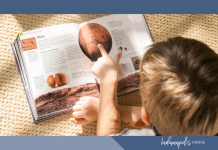 Let me start with a confession: I never thought I’d be the kind of parent who would strategically steer my children toward certain friendships. I imagined myself as the chill mom, the one who lets her kids find their own way, make their own mistakes, and learn from the occasional sandbox betrayal. But here I am, a few months into kindergarten and second grade, and I’ve become a low-key social engineer.
Let me start with a confession: I never thought I’d be the kind of parent who would strategically steer my children toward certain friendships. I imagined myself as the chill mom, the one who lets her kids find their own way, make their own mistakes, and learn from the occasional sandbox betrayal. But here I am, a few months into kindergarten and second grade, and I’ve become a low-key social engineer.
Not in the spy-thriller sense, of course. I’m not planting listening devices in lunchboxes or bribing kids with fruit snacks to befriend mine. But I am paying attention. I’m watching who shares, who shoves, who listens, and who makes my kids light up when they talk about their day. And yes, I’m gently nudging them toward the nice kids.
Because here’s the thing: childhood friendships matter. A lot. They shape how our kids see themselves, how they learn to trust, and how they navigate the world. And while I want my kids to be inclusive and kind to everyone, I also want them to spend their formative years surrounded by peers who bring out the best in them—not the ones who teach them how to squirm out of reading time or perfect the art of the dramatic eye roll.
So yes, I’ve found myself casually suggesting playdates with the kid who says “please” and “thank you” without prompting. I’ve lingered a little longer at pickup to chat with the mom of the child who helped mine up after a tumble. I’ve even had to make the tough call to redirect a friendship that was causing more stress than joy.
And here’s where the internal conflict kicks in. Am I being a helicopter parent? Am I micromanaging their social lives before they’ve even mastered tying their shoes? Possibly. But I prefer to think of it as laying a foundation. I’m not choosing their friends for them, I’m just helping them notice the ones who make them feel safe, seen, and supported.
While I’m busy nudging my kids toward the kind-hearted crowd, I’m also trying to raise them to be the kind-hearted crowd. Because friendship isn’t just about finding the nice kids, it’s about being one too.
We talk a lot about empathy at home. About how it feels when someone shares their toys, or when someone says, “You can’t play with us.” I try to model kindness in the little things—holding the door for someone with full hands, complimenting a child’s artwork at school pickup, or letting another car merge during rush hour, even when I don’t want to. These moments add up.
Kindness isn’t just a trait—it’s a skill. And like any skill, it needs practice, encouragement, and a whole lot of modeling.
So yes, I’m curating the sandbox—just a little. Not to control, but to guide. Because if I can help my kids build a foundation of kindness and connection now, maybe they’ll carry it with them long after the playground days are over.








